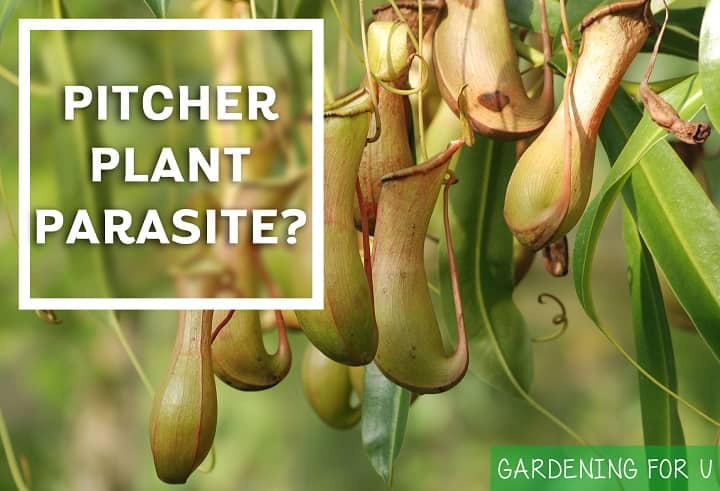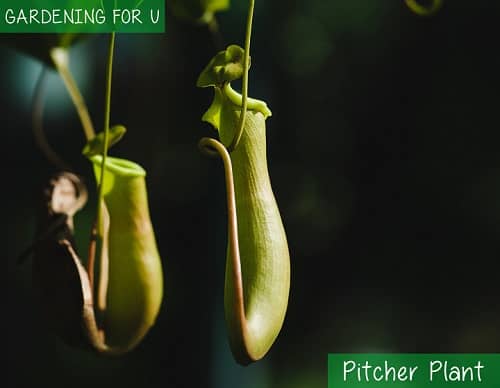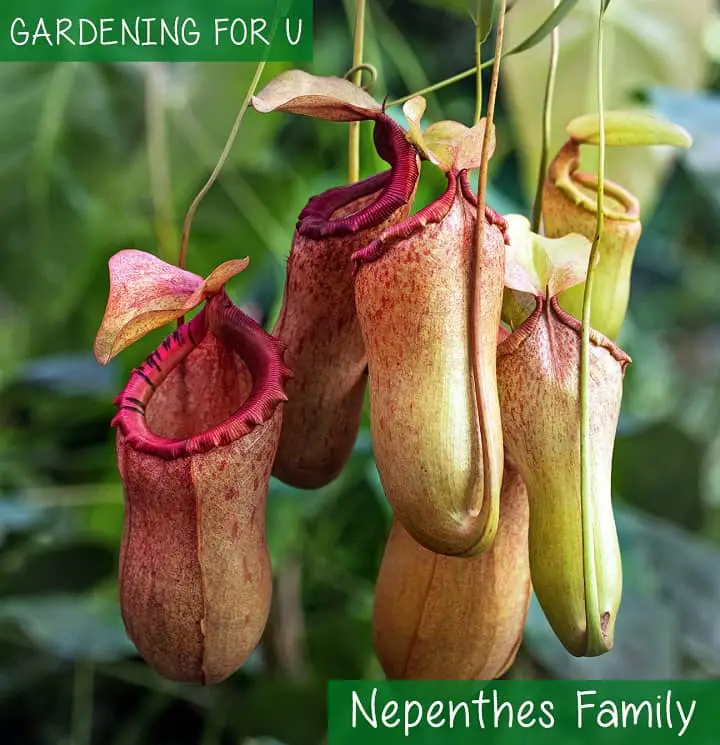Have you ever watched a plant, eating meat or insects? And did you wonder how they do it and are they parasites? Well, the plants you have watched are called carnivorous plants, and chances are that is a pitcher plant as it’s one of the most common carnivorous species in the world.
Is pitcher plant a parasite?
This is a common question: is pitcher plant a parasite? For answering this question let’s look at the definition of parasites, a parasite is an organism that resides inside a species or lives on another organism for gaining nutritional values. It may seem on the surface that pitcher plants have some parasitic attributes but this is not the case.

Just like any other plant, pitcher plants perform photosynthesis and take the mineral and vitamins from the soil. But because of their habitation, they cannot live just by taking nutrition from the soil, and they fill up their nutritional appetite by eating insects or other small living beings. Parasites live in others’ bodies by damaging it and they are completely dependent on the host body but pitcher plants are not like that. So in this sense, the pitcher plant is not a parasite.
What is Pitcher Plant?
Pitcher plants are one kind of carnivorous plant which uses their altered leaves to attract insects and animals and eat them. The leaves of pitcher plants are filled with one kind of liquid and they use this special kind of liquid to digest things. These uncanny plants set a trap for their prey and then hunt them.

Where can you find pitcher plants?
Pitcher plants can be found in different kinds of places, mostly in South East Asia and Australia. These plants eat insects and animals to gain minerals like phosphorus and nitrogen. These carnivorous plants actually grow in places where they can’t get many nutrients and for that, they get those nutrients from insects or small animals.
Pitcher plants actually carry out photosynthesis to produce oxygen and necessary nutritional elements for their body. But mostly they grow into sandy soils or damp places where they cannot get all the nutritional elements.
There are so many interesting factors that happen in one lifetime of a pitcher plant. Pitcher plants open up at the age of two to three weeks and over their lifetime they increase their effectiveness of hunting by soaring their smell and nectar.
Can Pitcher plants eat humans?
Well, now a question may arise if they can eat humans? Well yes, they can, but only in movies. Pitcher plants are not that big to digest an entire human being but their toxins can be harmful to human beings.
What are some species of pitcher plant
Pitcher plants actually belong to the family of Nepenthaceae and Sarraceniaceae, there is another family which is Cephalotaceae. These families are the most filled up with pitcher plants.
Sarraceniaceae

Sarraceniaceae family’s pitcher plants are scattered throughout North America and South America. Damp or sandy places, savannas, and swamps are the most commonplace of habitation for this family. The carnivorous traps of this family are very unique which include trumpets or pitchers to capture the living beings.
The most common pitcher plant which is Sarracenia purpurea is a member of the family and this has some unique attributes. The flower of this Sarracenia purpurea is purple red and the leaves resemble a jug-like downward feature which prevents its prey from escaping.
Nepenthaceae
There is only one genus Nepenthes in the family of Nepenthaceae and it has 140 species of pitcher plants in it. These tropical pitcher plants are distributed throughout Madagascar, Australia, and South East Asia.
The one interesting fact about this genus is it includes Nepenthes attenboroughii which is an endangered pitcher plant and it can digest rodents, insects, and other small animals. Some common members of the Nepenthaceae family are Nepenthes gracilis, Nepenthes veitchii, Nepenthes mirabilis, etc.

Cephalotaceae
Another small family of pitcher plants is Cephalotaceae which has only one species and one genus. This plant is small in size and can only be found in Australia. This plant only grows in damp soil or sandy meadows. This plant’s hairy outwards prevents rain falls and attracts prey.
Hunting and Digestion system of Pitcher Plant
Flies or insects are often attracted to smell and colorful pigments, pitcher plants use this feature to lure the insects into them. The edges of the pitcher plant are damped by the nectar or natural fluid and the insects fall into the plant because of this moistened border.
After falling into the trap these plants ensure that their prey cannot escape and they do this by producing waxy scurf which consists of cuticle and aldehyde crystals or they have some protector cells which do not let the insects to get out.
There are some forms of liquid trapped in the plant which is called phytotelmata and they soak the body of the insects into this fluid which cause the body to dissolve.

One interesting fact about pitcher plants is that although this plant can digest insects and small animals some pitcher plants and animals have symbiotic relationships like Nepenthes lowii and tree shrew. The border of Nepenthes lowii is not slippery so that the tree shrew can easily go in and out.
FAQ about Pitcher Plants
What type of soil does a pitcher plant need?
When it comes to the soil, pitcher plants can handle most of the potting mix. You just have to make sure, 2 things. The potting soil for pitcher plants need-
- To provide a great drainage system.
- Be low in nutrients.
A mixture of half half perlite and half dry sphagnum moss will be great for pitcher plants.
Can I feed my pitcher plant dead bugs?
Yes, you can feed dead bugs to your pitcher plants. As long as you do not give too big of a bug to your pitcher plant, it will be okay.
Pitcher plants eat dead bugs. So, no worries there.
Can I feed my pitcher plant alive bugs?
As a matter of fact, you can feed alive bugs to your pitcher plant too. Once, the bugs are close enough to the traps, your pitcher plant will handle the rest.
Just, remember, not to overfeed them. Otherwise your plant will get overwhelmed.
Conclusion
Is pitcher plant a parasite? Does it humans? Where can you find pitcher plants? We hope you have got the answer to all these questions by now. Let us know in the comment section, what do you think.
If not, and you are still confused if pitcher plant a parasite or not, read this article again carefully from the beginning.
By the way, do you know what Ikebana is? check this out.
source: Wikipedia
